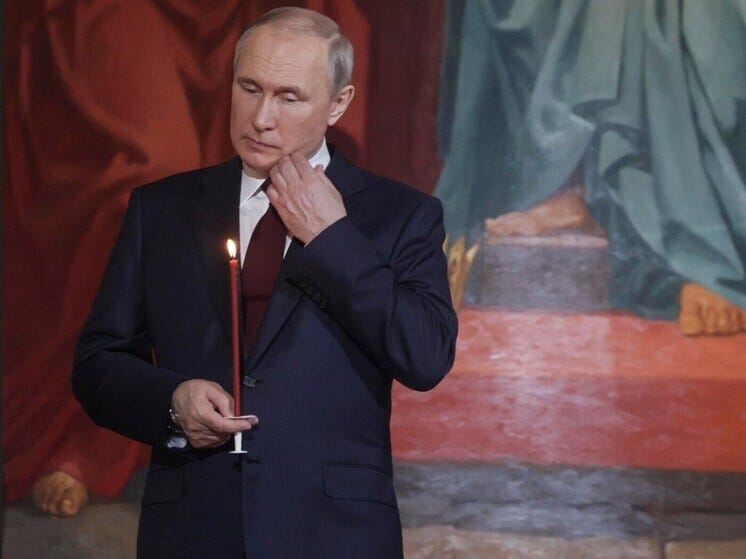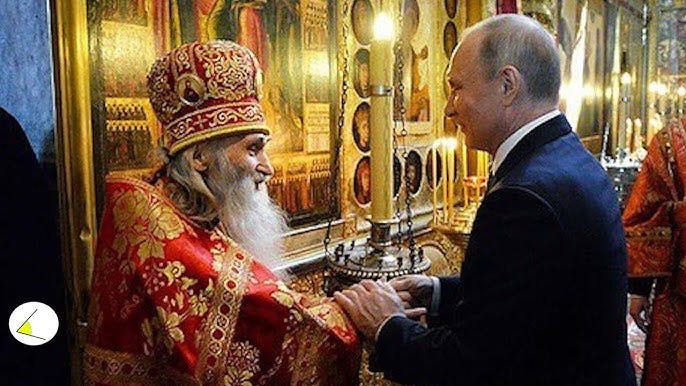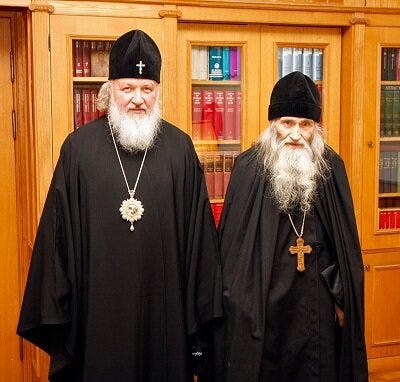Putin is praying for Trump. This was revealed in a recent interview with Tucker Carlson by Steve Witkoff, the U.S. president’s envoy for negotiations with Russia. Allegedly, upon learning about the attempt on the American president’s life, Vladimir Putin went to pray for his health.
This gesture deeply moved Donald Trump. However, anyone familiar with Vladimir Putin and his habits understands that this is just a typical Putin-style ploy.
It strongly reminds me of the famous trick Vladimir Putin used in 2000 when he first met another American president, George W. Bush. Putin knew that Bush was not just a religious man but someone who had found faith unexpectedly, in adulthood, at a conscious and mature age. And knowing this, he came up with a very interesting story.
He told Bush that during his time as deputy mayor of St. Petersburg, his family suffered a misfortune. His country house burned down completely, and his wife and daughters barely escaped with their lives. When he returned to the site to sift through the ruins, he discovered that only one thing had survived—a small cypress cross that had been hanging on the wall. This event had such a profound effect on him, he claimed, that he immediately found faith.
The story made a tremendous impression on Bush. And right after that meeting, the then-American president famously declared that he had seen the soul in the eyes of the Russian leader.
Of course, at that time, for Vladimir Putin, this was merely a calculated move, given that he clearly had no belief in God. As for what he believes in now—there is some doubt. However, during his years in power, he has developed a fascination with surrounding himself with various mystics. On the one hand, he believes in shamans, as I have written about in detail before. On the other, he frequently interacts with so-called startsy—elder monks revered in the Russian Orthodox Church, believed to possess miraculous abilities.
One such elders, for example, was the famous Elder Zosima, described by Dostoevsky in The Brothers Karamazov. But, of course, real elders have long since vanished—they were executed and wiped out during the Bolshevik purges of the early 20th century. Today’s elders are mostly former KGB officers, who now make up a significant portion of the Russian Orthodox Church’s clergy.
Most Influential Monk
Meanwhile, as discussions in America focus on possible negotiations with Ukraine and the likelihood that Putin might seek peace, in Russia, people are indeed praying—especially those in Putin’s inner circle.
This is because, in the past month, one of the most influential monks of the Russian Orthodox Church passed away. He was, perhaps, the most renowned supporter of the current war and the cleric with the greatest influence on the Kremlin. He was also the confessor of Patriarch Kirill and was therefore known as the gray cardinal of the Russian Church. His figure is so intriguing that it warrants a closer look—his life vividly illustrates the role the Church plays in modern Russia and within Putin’s inner circle.
Putin and startes Ilii
The legendary starets Ilii was one of the important faces of the current war against Ukraine. From the very beginning, he approved of it and unequivocally declared that Russia would inevitably emerge victorious.
In recent weeks, Russian propagandists have been mourning starets Ilii in unison, telling incredible tales of his miracles and insisting that he had prophesied Russia’s inevitable victory. However, he outlined three conditions for this to happen. The first: Putin must ban abortions. The second: swearing must be outlawed in Russia. The third: Lenin’s body must be removed from the Mausoleum on Red Square and given a proper burial. The late starets had a deep aversion to the founders of the Soviet state and communists in general—despite his own KGB background.
How this prophecy and guidance will influence Putin remains unclear, but according to various sources, starets Ilii was among those who played a role in the decision to launch the war. He was one of those who urged Putin to invade Ukraine without hesitation, arguing that Holy Rus’ must be united as a triune entity—meaning Russia, Ukraine, and Belarus should be part of a single state.
The Boy Who Saved the World
Alexei Nozdrin—the future starets Ilii—was born on March 8, 1932, under Stalin, at a time when religion was banned in the USSR and priests were being executed en masse. In 1941, Germany invaded the Soviet Union, and the village where the boy lived was occupied by the Nazis. Many years later, starets Ilii would claim that he, as a small child, personally changed the course of the war and secured victory for the Soviet Union.
The story goes like this: allegedly, he saw a car carrying Germans stop nearby. One of the officers, drunk, stumbled out and began vomiting—without noticing that he had dropped a folder containing secret military maps. After the car drove off, the boy picked up the folder and, through an escaped Soviet prisoner of war, delivered it to Marshal Rokossovsky. The marshal examined the maps, and this, according to the tale, determined the outcome of the Battle of Kursk and secured the USSR’s victory in the war.
At first glance, this story seems like sheer nonsense—but in Russia, newspapers have reprinted it over and over with absolute seriousness. No one questions its authenticity.
It was precisely in 1943 that Stalin changed his stance on religion. He was preparing to travel to Tehran to meet with his allies, Franklin Roosevelt and Winston Churchill. His main objective was to persuade the Americans to send troops to Western Europe and open a second front. Shortly before the conference, a delegation of Anglican Church representatives, led by the Archbishop of York, planned to visit Moscow—but there was no one in the Soviet Union suitable to receive them. This is why Stalin hastily decided to reestablish the Russian Orthodox Church. At that time, only three Orthodox hierarchs had survived. Stalin appointed one of them as patriarch and tasked them with rebuilding the Church from scratch. The project was placed under the direct control of the KGB.
From that moment on, the KGB handled recruitment within the Russian Church. Almost all priests and bishops, as a rule, combined their religious duties with KGB ranks.
It appears that Alexei Nozdrin—the future Ilii—was no exception. According to journalist Alexander Nevzorov, who had various contacts with both the Church and the KGB in the USSR, Ilii studied at the Leningrad Theological Seminary in the 1960s while simultaneously working as an informant. His job was as a telephone operator—but in reality, his task was to eavesdrop on the conversations of fellow students and professors and submit reports to the KGB.
In the 1970s, in recognition of his special merits, the KGB allowed him to go abroad—a rare privilege for Soviet citizens. He was sent to serve in a monastery on Mount Athos. In 1989, he was recalled to the USSR and placed in one of Russia’s most famous monasteries—Optina Pustyn.
Patriach Kirill and startes Ilii
In 2009, Ilii became the spiritual advisor to the head of the Russian Orthodox Church, Patriarch Kirill – he was actually a former classmate at the very same Leningrad Theological Academy—and, quite evidently, also a fellow KGB associate.
Keep reading with a 7-day free trial
Subscribe to The Last Pioneer to keep reading this post and get 7 days of free access to the full post archives.






